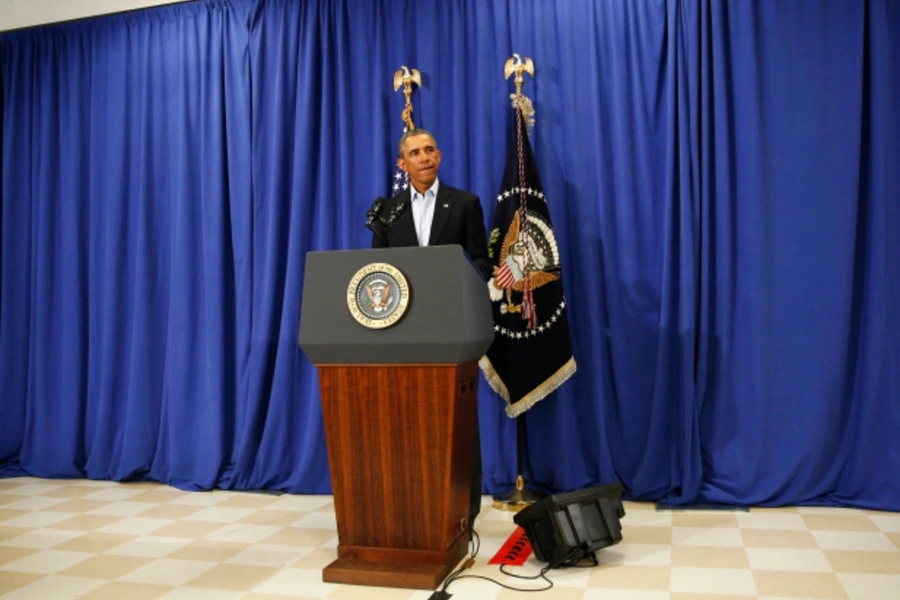Guest Post: The ISIS Video and Military Strategy in Iraq

More on:
Col. Clint Hinote, U.S. Air Force, is a Military Fellow at the Council on Foreign Relations. He holds a PhD in military strategy, and he recently returned from Korea where he commanded a U.S. air base. The conclusions and opinions expressed are his own and do not reflect the official position of the U.S. government.
I just finished watching the uncut video from the Islamic State (IS) titled “A Message to America.” Judging from the President’s reaction today, it is an important development. Here are some initial thoughts:
First, this is a group that is skilled at strategic messaging. The video quality is professional with slick transitions and special effects designed to deliver the core message. IS demands that President Obama stop the airstrikes against IS forces or more Americans will be killed, beginning with a second hostage shown at the end of the video. The video stays on message and each image is chosen to build upon those that go before. The penultimate image, where Foley’s severed head is perched upon his lifeless body and carefully placed to look into the camera, is designed to leave a lasting impression upon the viewer. It does.
Second, a particular line spoken by the militant in the video caught my attention: “You [President Obama] are no longer fighting an insurgency; we are an Islamic Army and a state that has been accepted by a large number of Muslims worldwide.” When combined with IS actions to take and hold territory across Syria and Iraq, I think we can be confident that IS leaders have made a key transition in their minds. Similar to Mao’s writings about the phases of protracted war, IS leaders appear to believe that their organization is ready to make the transition from insurgency to conventional warfare, where they are strong enough to conquer territory and engage their enemies directly. IS actions this summer show their commitment to this transition, but a counteroffensive of Kurdish and Iraqi forces combined with U.S. airpower has rolled back some of the IS gains in Iraq.
This brings us to a final observation; It is obvious that the bombing is having a significant and deleterious effect on the IS. Otherwise, why would it go to such lengths to make this video and risk the backlash that is likely to result? The video does not mention the other ways in which the United States is attacking the militants. It focuses on bombing by U.S. air forces, and it even shows in-cockpit video from a U.S. airstrike. In my mind, this represents a positive measure of effectiveness for the recent air attacks on IS.
While this video is probably a tactical success that will play well to core constituencies within IS, I cannot help but wonder if it is another sign of strategic overreach on the part of IS leadership. Just a few weeks ago, IS forces appeared to be the class of the region. IS was making sizable gains in Syria and Iraq before they went too far into Kurdish-held territory and threatened to commit genocide against religious minorities in the region. With U.S. citizens in danger and a humanitarian disaster appearing imminent, the President had little choice but to act forcefully with the best tool he had—U.S. airpower. Now, it appears that the attacks against IS forces are working, and it is likely that the murder of James Foley will only serve to unite U.S. policymakers in opposition to this jihadist group. I have to agree with Max Boot, who writes in Commentary: “Such desperate measures instead telegraph, well, desperation–and far from cowing anyone they are only likely to redouble the resolve of the civilized world to smash this group of genocidal jihadists.”
In this blog and elsewhere, Micah Zenko has written extensively about the tendency for limited interventions to grow over time. In this case, he will be proven prescient.
More on:
 Online Store
Online Store